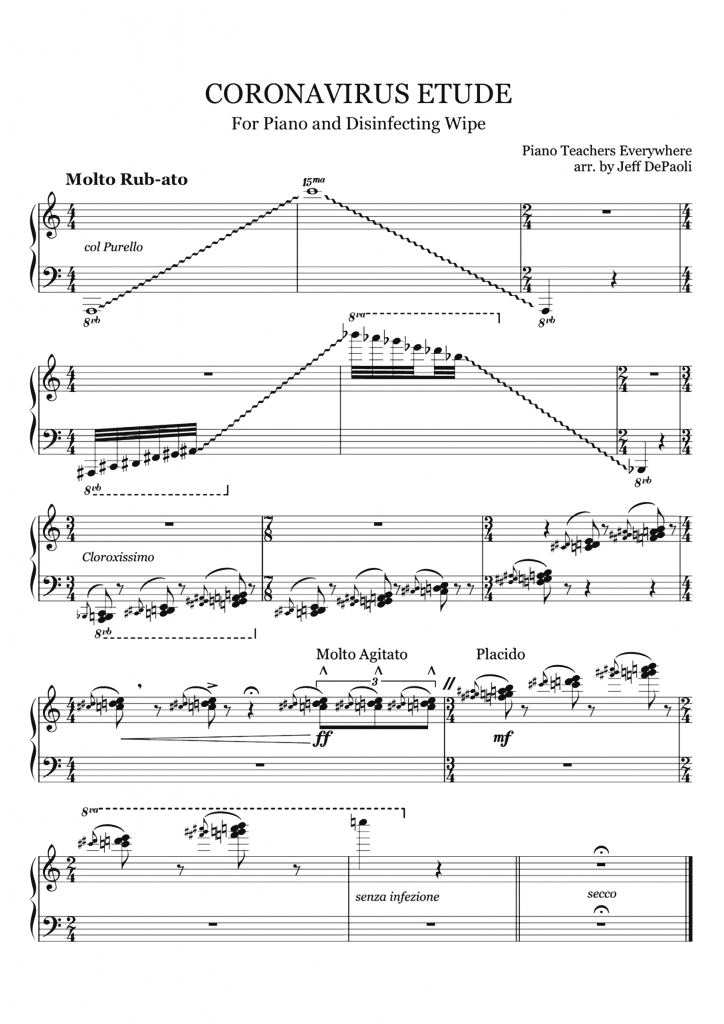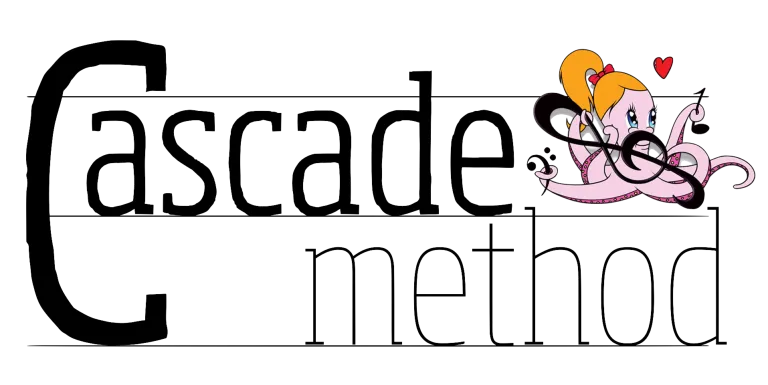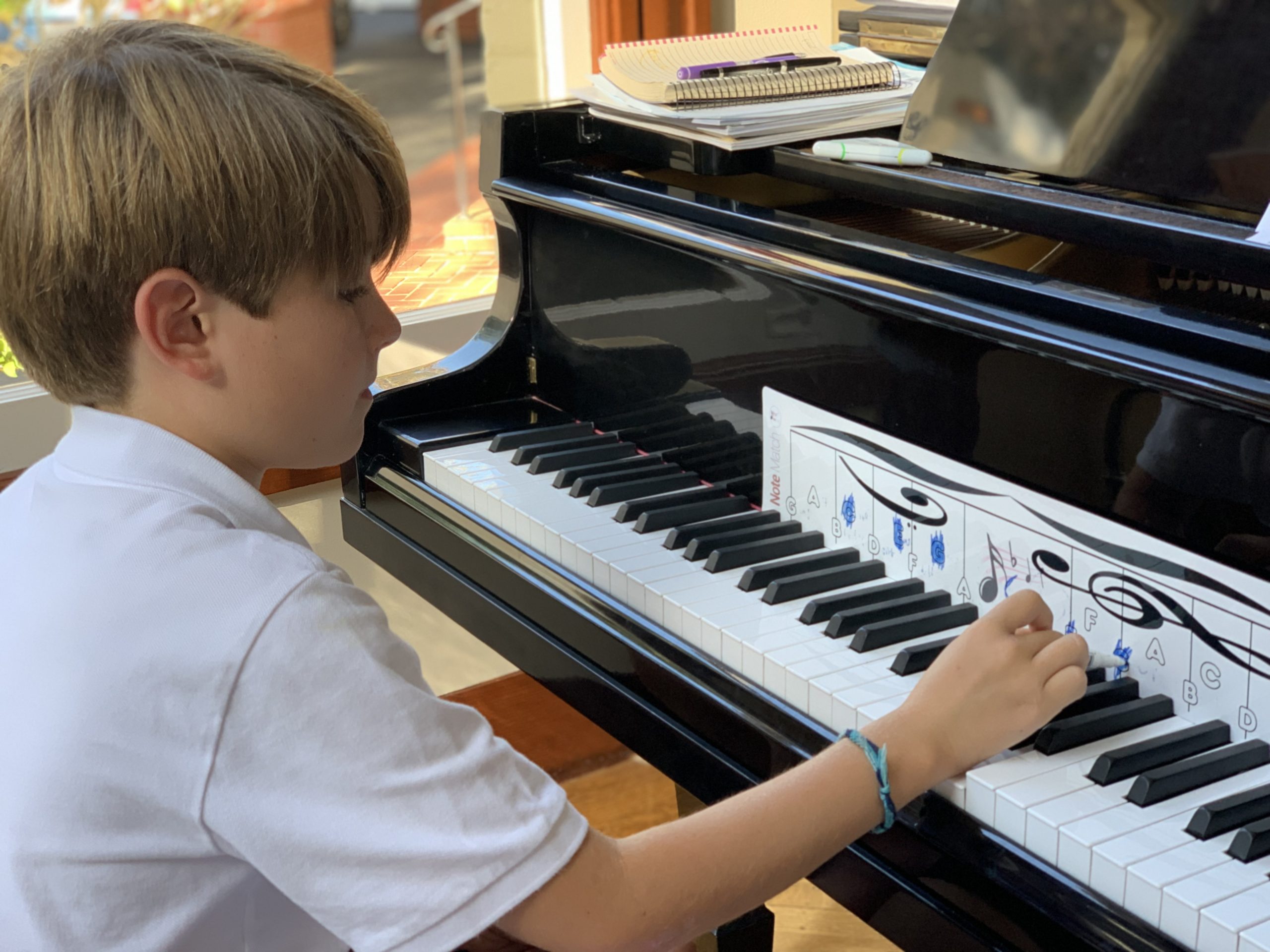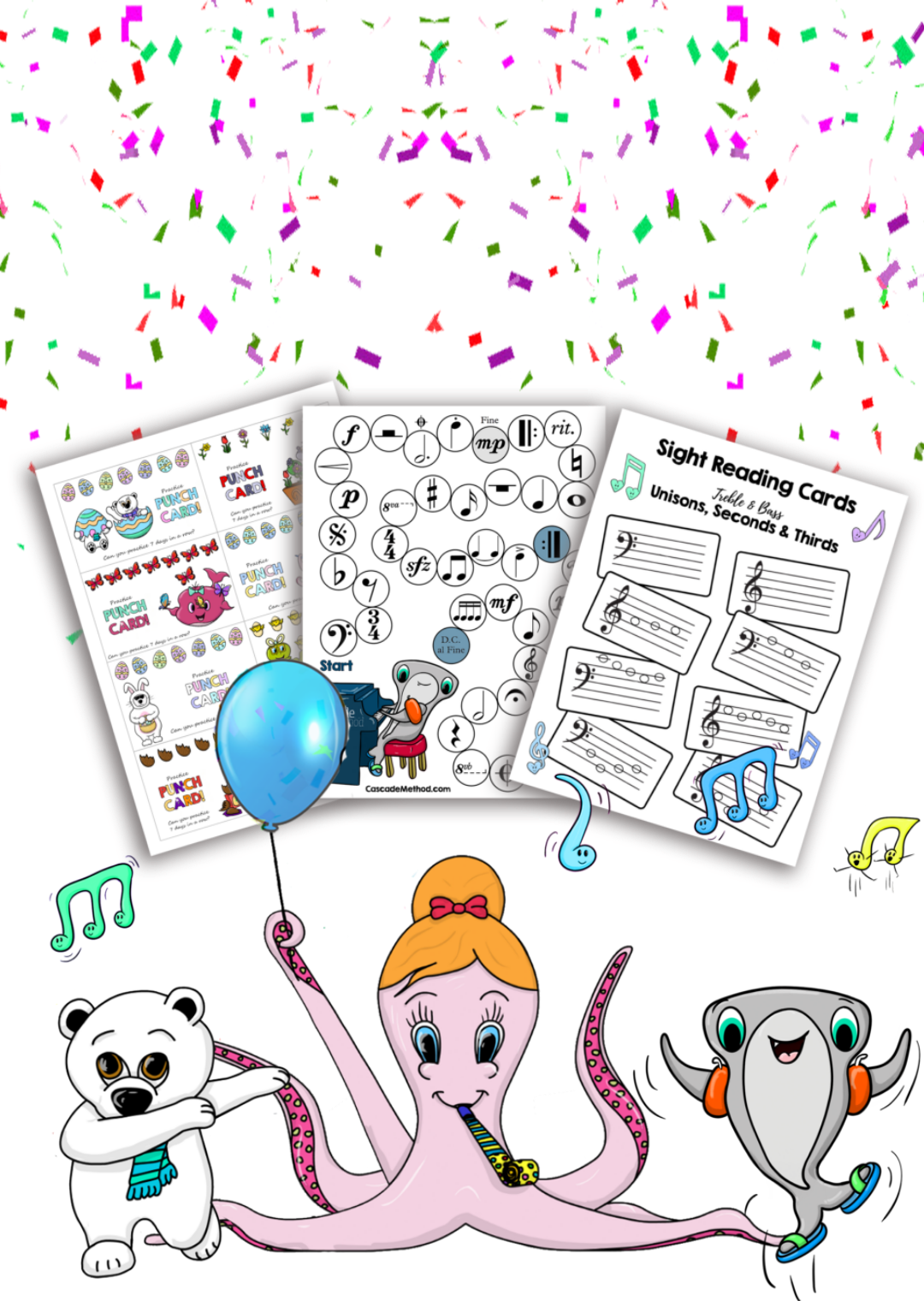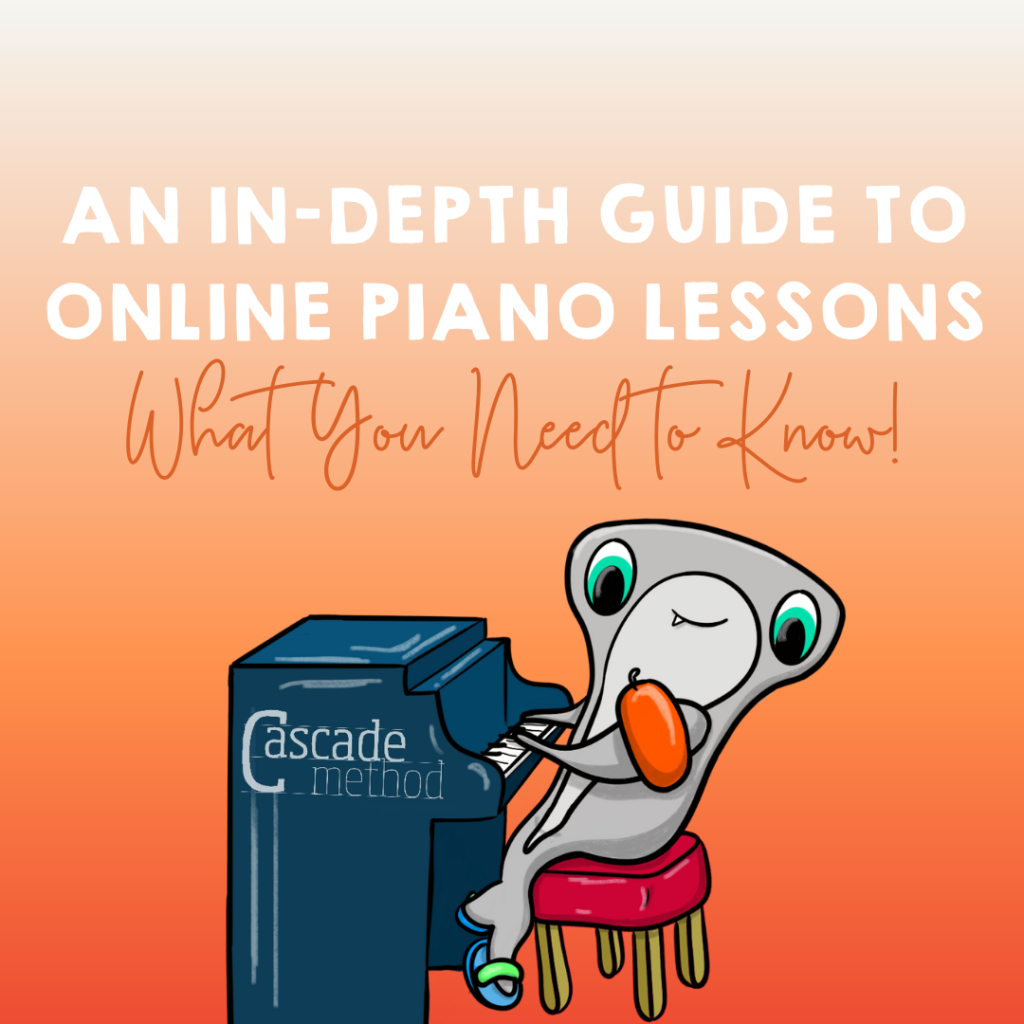
A Guide to Online Piano Lessons: What You Need to Know
My heart aches as I continue to hear the news of COVID-19 sweeping the entire world. I know we all are experiencing a little bit of uncertainty during this pandemic, but if there’s one thing I think a lot of us are realizing it’s that the internet is holding our lives together as we experience this global shutdown. Life as we know it may never be the same, but the reality of online work will be the new normal.
With that said, I do believe that online piano lessons are the future. Not that in-person lessons will ever die, but as I always say, the industry will evolve. The piano will never die, it will evolve. A career as a piano teacher will never die, but it will evolve and you have to make sure you’re staying ahead of the curve!
In this article, I want to share my experience with online teaching and how to transition over during COVID-19. Because, yes – you can still be teaching your students piano during this pandemic!
Your Guide to Online Piano Lessons
If you know me at all, you know that I am passionate about the piano and teaching my students in a fun way. Before we get into virtual set-ups, what to teach, how to virtually teach, and more, I wanted to first say that your online teaching should still be as enthusiastic and fun as your in-person teaching. You may have to get a little creative as to how you do this, but it’s definitely possible!
Fortunately enough, I experienced online piano teaching three years ago, rather than being forced to make the transition online during the coronavirus. My student was moving to Hawaii and we continued to do FaceTime lessons every week for 2 years!
Although it’s not the same as an in-person lesson, it’s definitely still worthwhile. Most likely, your students will be better at setting up their virtual classroom than you are!
Before we dive into all the details of online piano lessons right here, I wanted to give you the option to watch my March Live Workshop video that goes into everything, too!
Every month, I provide a live workshop that typically goes over something within the Cascade Method teacher training program, but I felt this was a pressing topic that was more important to discuss. Anyway, click play below and then come back to read the next section of the blog post! [Spoiler alert: You’ll get to download A Coronavirus Etude!]
How Do You Set Up Online Piano Lessons?
There’s no one way to teach virtual piano lessons. Some teachers go all out with multiple screens and a microphone; whereas, others play it more simple. I’m one of the simple ones! At least for now… you just have to do what works! If you plan to transition over to fully online, it may be better to get more fancy equipment but for now, simple works!
What I Use During Every Virtual Piano Lesson:
1. My iPhone with WiFi
Whether you have an iPhone or Android – either work. If you don’t have one of these smartphones or your student doesn’t have a smartphone, you can also use a free live-streaming service like Zoom, Skype, or Google Hangouts. Personally, I use Zoom when FaceTiming isn’t an option. The cool thing about these live-streaming platforms is some allow you to record the session! This could allow you to create a database of online training for your students and help them complete their homework by going back and watching!
2. A Tripod
Some of you may be like “what the heck is a tripod?!” It’s just a fancy selfie stick in my opinion. I simply attach my phone to the stand and position it to show myself playing the piano fully. This helps students see my hands while playing a piece and also keeps it entertaining because they can still see me!
- Here is the link to the exact tripod that I purchased! It was only $25!
I also use mine to create Instagram videos for my followers. There are more benefits to it than just online teaching! (And you can take some great selfies!)
3. The Piano (duh) ?
Some of you may not approve… but I actually teach all my lessons on my couch. When you think about it though, when I’d teach my students in person, I would just sit next to them on a chair, and didn’t always play on the piano… so my take is that comfort is key!
My students know what to expect during every lesson, so this is what works for me. If they need me to show them a certain piece or something on the piano, I get up and play it for them! Ultimately, I think for online lessons, the most important thing is to be focused on them and show them your face when you can. It makes it seem like you’re there with them rather than just looking at your piano.
If you want to see how my lessons really look, watch the live recording below!
4. NoteMatch
NoteMatch is a LIFESAVER for online lessons! I honestly think that if I didn’t have NoteMatch, I wouldn’t be able to teach online lessons. This piano reading tool is what allows students to really instruct themselves! As long as they have NoteMatch and can hear my guidance, I don’t have to show them really anything – NoteMatch does it for them!
In the picture below you can see NoteMatch placed behind the black keys. It’s a grand staff whiteboard and it’s the MOST FUN AND EASIEST way to get your students to read notes!
5. Take Pictures of All the Pieces!
Before every lesson with each student, you should know all the pieces that you will be going over and have pictures of each. If you don’t own the piano books that your students are currently working in, you can either purchase your own copies or you can ask the parents to take pictures of the pieces for you! Be mindful of their parent’s time by giving them ample time and reminders to send you the pictures before their lesson.
For my students, they each have a notebook that breaks down exactly what we do in each lesson, along with their homework. You can have parents send you this, too!
- PRO TIP: I’m constantly uploading sheet music to my website database so I know exactly where to go whenever I need a specific piece. When you become a member of the Cascade Method Teacher Training Program, YOU have this perk, too. You will have full access to over 3,500 downloadable pieces!
6. Set Up Homework As Usual
You should still give homework as much as you typically do with your in-person lessons. I recommend having a notebook yourself and writing out the homework for each student you see. That way, you can send your student’s a picture of their homework and they don’t try to say “I don’t remember!”
7. Did I miss anything?!
As I said, this is what works for me! I’d love to hear what has worked for you and what hasn’t worked when teaching virtual piano lessons. If you have any insight or need any advice on something we didn’t cover, please leave a comment below! Let’s help each other and share our ideas!
That’s really it! It’s quite simple for me! I begin by FaceTiming my student and treating it no differently from any of my in-person lessons. We follow the same lesson plan which is to start with a playlist, go over the pieces that we’re currently learning, then learn new pieces, and end with a little bit of theory! As long as you have a lesson planned out, it’s no different from teaching in person.
I’ve recorded a full virtual piano lesson with some of my students that walks you through my lesson plan in real-time! If you need some inspiration on how to go about teaching online, watch this in your free time!
Problems that May Arise During Online Piano Lessons:
If you don’t prepare or think of different scenarios that may occur, you’ll end up wasting the entire lesson on getting connected or fixing the video placement, etc. That can get really frustrating for everyone and waste your student’s parent’s money! Nobody wants that so here are some problems that may inevitably happen so you can be prepared!
1. Guiding your student on where to place their video
The most important thing about virtual lessons is being able to see them playing the piano! You have to ensure they’re playing the right keys and guiding them when they feel stuck! View the picture below to see where I tell kids to position their phones on the piano when teaching online lessons. If your students are using a keyboard, they will need to use a separate nightstand or table to prop the phone or tablet upright. If they are using a laptop to stream in, they can place it on a side table as well. You need to determine a routine placement in your first online lesson, so this doesn’t take time away from future lessons.
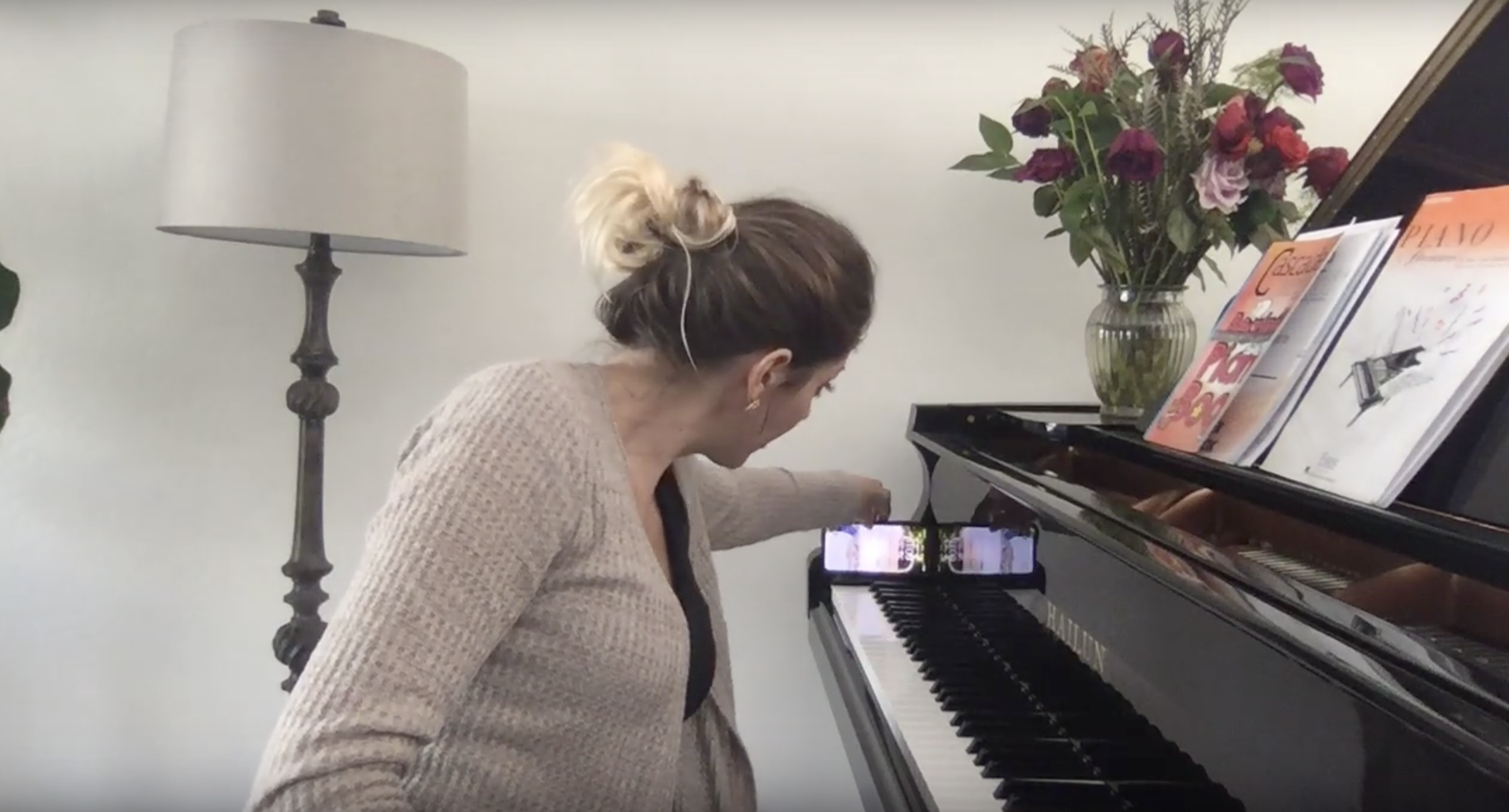
2. Losing connection or experiencing poor connection
If you lose connection, you can always try to refresh your wifi connection by disconnecting and reconnecting. Tell your students to do this, too. If you still are experiencing lagging after that, it may be best for you to call them back and just listen to them playing. This isn’t as fun and it’s ultimately the last resort but it’s circumstantial and they can still practice without you physically seeing them.
3. Not making it fun
I think one of the biggest problems piano teachers may face in transitioning to digital lessons is losing sight of their personality! You have to still be focused on the student and encourage them as they play. One way I keep my students excited and confident is by giving them virtual high-fives! They love the concept and it allows them to take a second and laugh and have fun! If they see you distracted, uninterested, or unenthused, they’re going to feel the same way. Always try to make it fun!!! If you’re struggling with fun methods to teach your students, I know how to help…
Don’t let Virtual Piano Lessons Scare You
I know it can be intimidating to teach in a new way, but it’s also a blessing to be able to teach remotely. The benefits far outweigh the disadvantages, especially in a time like this. If you have any further questions about how to teach your piano students online, don’t hesitate to reach out or comment below! There are a few more techniques I talk about in the Live Workshop video. Listen to it here when you get the chance, as well as see how I set up my space!
Overall, your students know that this is a new experience. Instead of getting intimidated and trying to make it perfect, explain to them that you’re new to this, too! When you let them in, they’ll hold themselves responsible for whether it goes well. It’s a “we’re in this together” type teaching and your students may be more open and well-behaved knowing your honesty.
Download The Coronavirus Etude!
OH MY GOSH! Is this not the funniest thing ever? Your kids are going to LOVE this and they’re going to think they’re so cool for knowing how to play an Etude! This is a fun way to teach your students how to clean their piano while having fun and feeling cool because they’re playing an expert-level type piece!
All you need is this printout and a disinfectant wipe!
